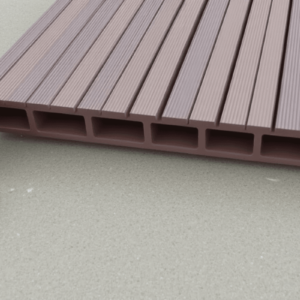Comparing Prices: WPC vs Traditional Materials for Exterior Wall Cladding
Introduction
When it comes to exterior wall cladding, homeowners have a plethora of options ranging from traditional materials like wood and vinyl to more modern alternatives such as Wood-Plastic Composite (WPC). Each material has its own set of advantages and disadvantages, particularly in terms of price, maintenance, durability, and appearance. This article delves into a comparative analysis of these materials, helping you make an informed decision based on your specific needs.
Wood-Plastic Composite (WPC) Exterior Wall Cladding
Price: The price of WPC exterior wall cladding can vary significantly depending on the quality and brand. On average, WPC costs between $4 to $9 per square foot. While this may seem higher than some traditional materials, the long-term benefits often justify the initial investment.
Maintenance
WPC requires minimal maintenance compared to wood. It is resistant to rot, moisture, and insects, which means less frequent painting or sealing. However, regular cleaning with mild soap and water is recommended to maintain its appearance.
Durability
One of the key advantages of WPC is its durability. It can withstand harsh weather conditions and resist warping, cracking, and fading. A study by the University of British Columbia found that WPC outperforms traditional wood in terms of longevity and resistance to environmental factors.
Appearance
WPC offers a natural wood-like appearance but with added texture and color options. It can be stained or painted to match various architectural styles, making it a versatile choice for modern and traditional homes alike.
Traditional Materials: Wood and Vinyl
Wood Exterior Wall Cladding
Price: Wood is generally cheaper than WPC, costing approximately $3 to $7 per square foot. However, the total cost can increase due to ongoing maintenance requirements.
Maintenance
Wood requires regular maintenance, including painting or staining every few years to protect against moisture, insects, and decay. Neglecting this can lead to costly repairs and replacements.
Durability
While wood is durable, it is susceptible to rot, insect damage, and warping if not properly treated and maintained. According to the U.S. Department of Agriculture Forest Service, untreated wood can last up to 20 years with proper care.
Appearance
Wood offers a classic and elegant appearance that many homeowners prefer. Its natural grain patterns and rich colors can enhance the aesthetic appeal of any home.
Vinyl Exterior Wall Cladding
Price: Vinyl is another cost-effective option, typically priced at $2 to $5 per square foot. It is also known for its low maintenance requirements.
Maintenance
Vinyl is virtually maintenance-free, requiring only occasional washing with water to keep it clean. It does not require painting or sealing, which saves both time and money.
Durability
Vinyl is highly durable and resistant to weathering, fading, and impact. It can last up to 50 years with minimal degradation, according to the Vinyl Siding Institute.
Appearance
Vinyl comes in a variety of colors and textures, allowing homeowners to achieve a wide range of looks. However, its appearance may not be as authentic as wood or WPC, especially in close-up views.
Real-World Case Studies and Expert Opinions
According to a survey conducted by the National Association of Home Builders, over 70% of homeowners who installed WPC exterior wall cladding reported high satisfaction levels due to its low maintenance and durability. In contrast, those who chose wood cited concerns about ongoing maintenance and potential damage from weather and pests.
Expert opinion from the American Society of Home Inspectors suggests that while vinyl and WPC offer lower maintenance and longer lifespans, wood remains a popular choice for its aesthetic appeal and natural warmth. However, they recommend considering the long-term costs and environmental impact when making a decision.
Conclusion
Choosing the right exterior wall cladding depends on your priorities regarding cost, maintenance, durability, and appearance. WPC offers a balance of low maintenance and high durability, making it a strong contender despite its higher upfront cost. Wood provides a timeless look but requires significant upkeep, while vinyl is a budget-friendly option with minimal maintenance needs.
Ultimately, the best choice will depend on your specific needs and preferences. Weighing all factors and consulting with professionals can help you make an informed decision that enhances your home’s value and beauty.





Reviews
There are no reviews yet.